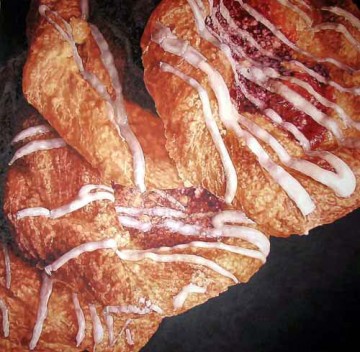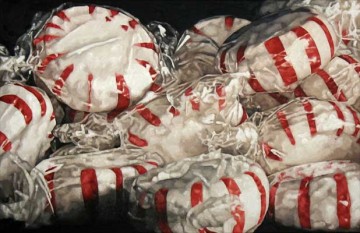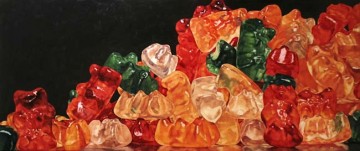During the film My Kid Could Paint That (2007, Sony Pictures), New York Times chief art critic Michael Kimmelman said:
I think the beauty of art is that it is in so many ways open-ended, and we should have this in life; there should be cultural things which allow us to add our own thoughts to them, to decide for ourselves whether we like it. But the truth is that a lot of people don’t want to have to bear that burden. We want to be told what we’re supposed to think, we want to be spoon-fed stuff, and the fact is that most of our culture is about that: making things convenient for us, instantaneously obvious, whether it’s fast food or bad television, it doesn’t really take much effort on our part.
I was literally typing the above paragraph moments before I first read about Steve Martin and Deborah Solomon at the 92nd Street Y. How their conversation was interrupted and redirected to suit the audience was a perfect real-time projection of what I had just transcribed, although Steve Martin’s audience at least expended the effort to voice their boredom.
(Artists may internalize this as evidence that art must be made worth the effort, able to capture your eyes, which is when they will undoubtedly aspire toward advertising. Not much else gets our attention for a whole sixty seconds. And when it does, Apple and Urban Outfitters make it hip and suddenly you live in this entire aesthetic built for you by someone you really don’t know so well. By the time art is reduced to advertising, it’s nothing more than an easily appropriated logo, as meaningless as Apple’s for the last 35 years, especially in comparison with their original logo, which referenced Sir Isaac Newton.)
Pamela Johnson has no control over how people ingest her junk food paintings, and there is no way to convince anyone that certain interpretations are more apt than others. People must make that decision for themselves, must sift through their own evidence.
Yet it’s difficult to accept that such images can exist as evidence in any other context, that there are no absolutes when considering the quality of reception of any given piece of information. Wanting information to be received and appreciated and acted upon in one way is certainly dictatorial, but our military’s decision to focus-group its image so as to better swindle people is evidence, in my opinion, of an irrefutably strong argument in favor of an informed citizenry possessing the ability and desire to deconstruct the world around them. Unless you work for the armed forces, is there any room for interpretation here?
What we consume – not just strange chemical cakes topped with processed frosting product – is spun information, yet another acquiescence to the dictatorship of consciousness under which we live. Seeing only what we’re presented with and not delving beneath the sugar, we miss the machine that spins the very idea of wholesomeness into our memories. Adequate images, however, help us see through to something more true and relevant. At least, that’s how my set of beliefs interprets the evidence I have chosen. Maybe it’s all spin by another name.
Which brings me around to Ren Weschler, who has written at length about perception and presence in his biographies of both Robert Irwin and David Hockney. Weschler shared a commencement address he gave at UCSC Cowell College in June of 2009, and about a page and a half in he wrote:
…things do look bleak today, especially if you are a graduating senior entering this particular job market, the economy all in shards and cratered, and frankly by the shenanigans of my generation: the fallout of a forty-year binge, a thrall to the unfettered free market, a contempt for the proper role of public governance…
This could easily be spin from one particular type of person existing in one particular type of circumstance, or it could simply be general wisdom. I lean toward wisdom. Weschler can really cook on politics because he remembers history as if he was there, but he hasn’t waded too deeply since 2004’s Vermeer in Bosnia (Pantheon), and to a larger extent with 1999’s Calamities of Exile, (University of Chicago Press).
His address went on:
A few months ago, a reader of mine, someone I didn’t know, wrote from out of the blue to ask why I wasn’t doing more political writing these days, and I responded, that day, by confessing the way I’d been overtaken by a certain despair at the uselessness of expending the effort. What was the point? At which point, this stranger wrote, “Does it occur to you that it’s not the despair that has stopped your writing but rather the fact that you are not writing that has led to your despair?” And of course she is right. And in fact, the situation is not hopeless.
I find this helpful to hear on a regular basis from someone I trust. Hearing it enough makes it seem real, just as seeing personally significant images connects us to others, makes us believe in something beyond our arms-length world view. Despite the fact that giant cupcakes elicit the Pavlovian death knell of mankind for me, the paintings also fortify with some quiet measure of hope in that they’re proof that art is being made in response to or acknowledgment of that death knell; evidence that someone is aware.

Pamela Johnson, "Danishes," 2008. Oil on canvas, 58 x 60 in. Courtesy the artist.
We can find it anywhere if we keep our eyes open. We can witness and latch on to an image that propels us toward some clarity, even if it is circuitous and haphazard, a work in progress. The situation is not hopeless. Pamela Johnson certainly isn’t alone in starting a conversation about indulgence and indifference, about errors and the corrections.
I don’t know the depth of the chasm that separates one belief from another, or if it’s a chasm at all, but art helps me land in the footholds while I look around. Even the art that attaches itself to my particular brand of hopelessness lifts me up. It may speak a sorry truth to me, but that it speaks to me at all is palliative. That so many collected bits of what I initially saw as random information should be connected by paintings of junk food still strikes me as odd and fantastic, and compels me to share. That part is effortless.





